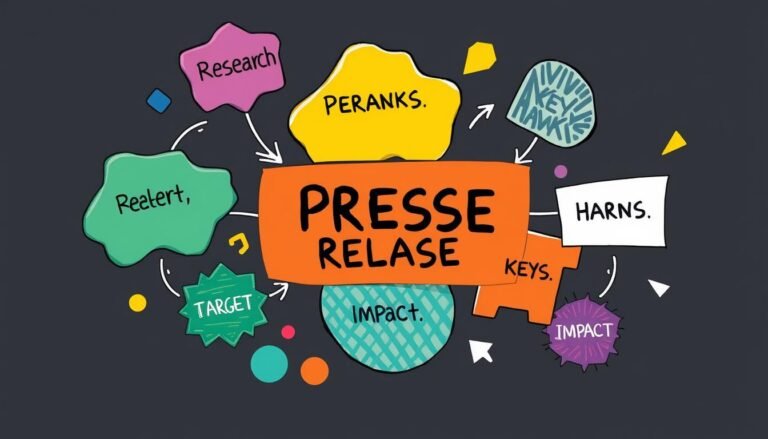How to Implement a Successful CRM System
Did you know that nearly half of all CRM implementations fail to meet expectations? This fact shows how vital it is to know how to put a CRM system in place right. In today’s fast-paced business world, a CRM system is key to better customer relationships and smoother operations. With the right steps, businesses can boost sales and work more efficiently. We’ll look at key steps to make your CRM system work better for your business.
Key Takeaways
- Nearly 50% of CRM implementations fail to meet expectations.
- Setting clear goals and a budget is key to success.
- A well-thought CRM strategy boosts ROI and system use.
- Training users well is crucial for using CRM regularly.
- Linking your CRM with other tech tools makes it better.
- Overcomplicating CRM setup can lead to solving the wrong problems.
Understanding CRM Implementation
Implementing a CRM strategy is more than just buying software. It’s a detailed plan to use customer relationship management systems well. Small businesses see CRM software as key for managing customer ties and making sales smoother. The success of a CRM system relies on following best practices in its implementation.
What Is CRM Implementation?
CRM implementation means setting up a CRM system that fits a business’s specific needs. This process is crucial. It includes looking at goals and current workflows, picking the right CRM, and training the team. Using the right CRM integration methods boosts how well you connect with customers.
Importance of Effective CRM Integration
Effective CRM integration is very important. It links the CRM with tools like email, phone, and calendar, making everything work better together. Companies that don’t focus on this might struggle with scattered customer data and poor relationship management. To avoid problems, set clear goals, timelines, and consider getting help with implementation.
Training your team well on the CRM ensures they use it right. This leads to better decisions and sales. Regular updates and improvements after implementation help keep customers and grow the business.
| Step | Description |
|---|---|
| Step 1 | Analyze goals and processes before exploring CRMs. |
| Step 2 | Research CRMs based on essential and nice-to-have features. |
| Step 3 | Consider investing in implementation support for successful rollout. |
| Step 4 | Train the team on using the new system with structured plans. |
| Step 5 | Test the system before going live to identify and address potential issues. |
| Step 6 | Review and streamline processes after implementation for optimization. |
How to Implement a Successful CRM System
Starting with a CRM system needs careful planning. You must define goals and requirements that match your business. This careful planning helps make the switch to a new customer relationship management tool smooth. We will look at key steps to set clear goals and understand what CRM you need.
Establishing Clear Goals and Budget
First, you need a clear plan with defined goals. Before picking CRM software implementation, figure out what you want to achieve, like better lead capture or more efficient teams. This step guides all your choices during the setup. It’s also important to set a realistic budget. CRM prices range from free for unlimited users to over $100 per user each month. Matching your budget with these prices makes the process easier.
Defining Your CRM Needs and Requirements
Knowing what your business needs from a CRM is key. Make a detailed CRM implementation checklist with essential and nice-to-have features. This helps avoid spending on features you don’t really need. Trying out different CRM solutions can help pick the best one for you. Think about what integrations you need, advanced reporting, and the support from vendors. These factors affect how satisfied and efficient you’ll be.
| Feature Category | Must-Have Features | Nice-to-Have Features |
|---|---|---|
| Lead Management | Lead tracking | Lead scoring |
| Reporting | Basic analytics | Custom reporting |
| User Experience | Intuitive interface | Mobile access |
| Integrations | Email integration | Integration with third-party apps |
| Support | Basic support | 24/7 customer service |
Steps for CRM Implementation Success
For a CRM project to succeed, you need a clear plan. Start by building a dedicated team. This team should include people from different departments. This ensures everyone’s ideas are heard. With a strong team, you can follow these steps for a successful CRM roll-out.
Building Your CRM Project Team
Choosing a diverse team is the first step. A good team might have:
- Project Manager: Oversees the implementation process.
- Technical Expert: Handles software-related challenges and configurations.
- Data Analyst: Manages data cleaning and preparation.
- Training Coordinator: Ensures all users are adequately trained.
This team is key in solving problems like low user adoption and poor training.
Key CRM Implementation Steps
Implementing a CRM system has several important steps. These steps help guide you through the process. They include:
- Identify Business Needs: Determine specific goals, like improving customer satisfaction or increasing revenue.
- Select the Right CRM Software: Research options based on functionality and cost.
- Data Cleaning: Review existing data, remove outdated information, and merge duplicates.
- Configuration and Customization: Tailor the system to align with business processes.
- Testing: Ensure everything works correctly before full deployment.
By following these steps, organizations can make the most of their CRM systems and avoid the 75% failure rate seen in CRM projects.
Identifying Required Integrations
It’s crucial to think about which tools need to connect with your CRM system. Look at which integrations are needed. Common ones include:
| Integration Type | Purpose |
|---|---|
| Email Marketing Platforms | Facilitates direct communication with customers and prospects. |
| Accounting Software | Streamlines financial processes and improves reporting. |
| Customer Support Tools | Enhances customer service and response time. |
Knowing these integrations early on helps ensure a smooth transition and better functionality once the CRM is up and running.
Training and Supporting Your Team
Starting a CRM system is just the first step to better customer management. It’s key to train your team well for CRM use. A trained team will use the CRM better, which helps with customer relationships and business success.
Importance of Change Management
When you bring in a new CRM system, managing change is crucial. Explain the benefits to your staff to make the switch smoother. Include managers and sales leaders in training to keep the CRM in line with your goals.
Training should be tailored for everyone’s skill level. This makes sure each employee feels ready to use the CRM. Regular updates to your training keep it fresh and relevant, helping with tasks like data analysis and sales automation.
Testing the CRM Before Going Live
Testing the CRM system before it goes live is a must. Use a structured approach to review and get feedback from a few users first. This helps spot and fix problems with data and system connections.
A good test phase makes the switch smoother and helps more people use the CRM. This improves communication and teamwork in your company.
Here are some CRM software training best practices to remember:
| Training Method | Description | Frequency |
|---|---|---|
| Online Tutorials | Flexible learning resources available at any time. | As needed |
| In-Person Workshops | Interactive sessions for hands-on practice and engagement. | Monthly |
| One-on-One Coaching | Personalized support tailored to individual needs. | Quarterly |
Using the right tips for successful CRM implementation makes the transition smoother and boosts your investment return. After training, ongoing support is key for success. Having a CRM expert in the company for guidance and quick answers is helpful.
Listening to what employees say about the training helps improve future sessions. This builds a culture of ongoing improvement in your company.
Conclusion
Implementing a CRM system well needs careful planning and action. Start by setting clear goals and understanding what your business needs. Getting top-level support is also key to success.
It’s important to make sure the CRM fits with your current work processes. This means looking closely at how things are done now and how the CRM can help improve them.
Getting team members from different areas involved is a big plus. It helps make sure the CRM is used well and by everyone. Remember, about 75% of CRM projects fail because people don’t use them properly. So, training and support are crucial.
Creating a team culture that values working together helps a lot. And making sure everyone has what they need to use the CRM well is essential. This way, businesses can get the most out of their CRM systems.
A CRM system that’s used right can really help with building better customer relationships. It can also make sales more efficient and customers happier. With an average return of $8.71 for every dollar spent, businesses have a great chance to thrive if they do CRM implementation right.
Source Links
- CRM Implementation: 10-Step Guide
- How to Successfully Implement a CRM System
- CRM Implementation. A best practice guide.
- 6 Steps to a Successful CRM Implementation | Accelo
- How to Approach the CRM Implementation Process: 5 Steps for a Successful CRM Rollout
- CRM implementation plan: Implementing CRM in 10 steps
- Successful CRM Implementation Plan: 10 Step Strategy
- CRM Implementation Process: 7 Steps for a Successful Implementation
- How to Create CRM Training Program for Your Team?
- Training and Onboarding Employees on CRM Software | Nutshell
- The Ultimate Guide To CRM Implementation
- 8 TIPS TO A SUCCESSFUL IMPLEMENTATION OF YOUR NEW CRM SYSTEM








